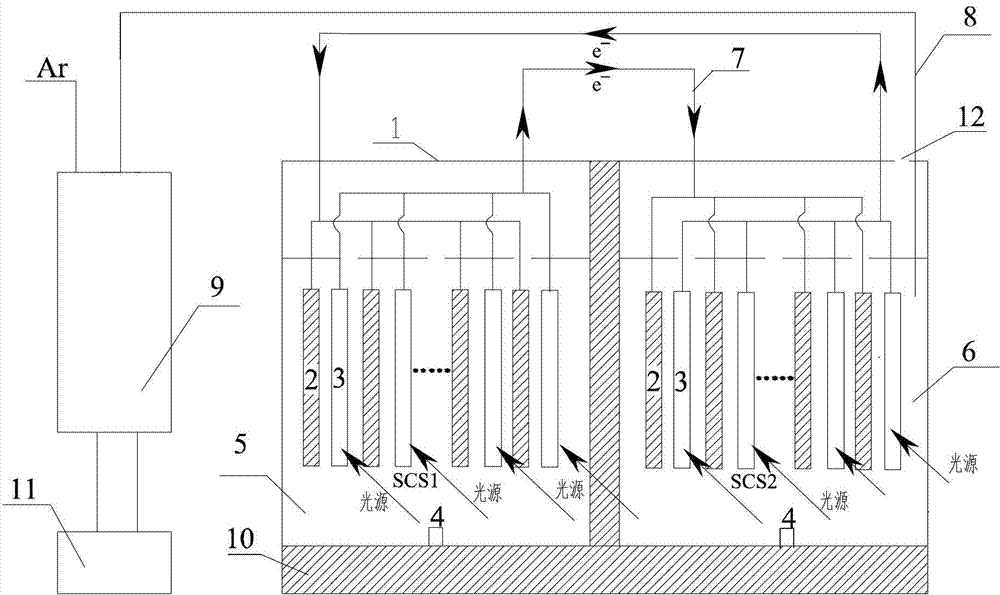Method and device for preparing hydrogen based on photoelectric degradation organic pollutant driven by visible light
A technology for organic pollutants, photoelectric degradation, applied in chemical instruments and methods, hydrogen, inorganic chemistry, etc., to achieve the effects of compact equipment, energy saving, and simple device operation
- Summary
- Abstract
- Description
- Claims
- Application Information
AI Technical Summary
Problems solved by technology
Method used
Image
Examples
Embodiment 1
[0040] Reaction device based on visible light type BiVO 4 The material is the anode, and the platinum sheet is used as the cathode. The distance between the cathode and anode is adjusted to 2cm. A 500W adjustable xenon arc lamp is placed 5cm away from the reactor as the light source, and a cut-off filter is used to obtain visible light. The photocatalytic primary cell contains a certain concentration of redox couple mixed solution, the reaction equation: .
[0041] By optimizing the redox couple concentration, solution pH value, visible light intensity, etc., the system generates a bias voltage above 1.2V to study the interaction between the visible light catalyst and the redox couple. Taking hydroquinone as the simulated pollutant, 0.01M hydroquinone and 0.1M Na 2 SO 4 For aqueous solution, depending on the electrode material, the photocatalytic hydrogen production reaction cell needs a bias voltage of about 0.8V to degrade pollutants and produce hydrogen. In this way, t...
Embodiment 2
[0044] Visible light-type Fe 2 o 3 The material is the anode, the platinum sheet is used as the cathode, hydroquinone is used to simulate organic wastewater, and NaI and NaIO are used to 3 The mixed solution acts as a redox couple. Argon was used as the carrier gas to remove the air in the reactor. A 500W xenon arc lamp was placed 5cm away from the reactor as a light source, and a cut-off filter was used to obtain visible light. After irradiating the anode material, turn on the magnetic stirrer after 15 minutes, and control the rotating speed at 500r / min. The head air of the reactor was extracted to detect and analyze the hydrogen content. The concentration changes of organic pollutants and their degradation intermediates in wastewater were determined by high performance liquid chromatography. After 60 minutes of treatment, by detection and analysis, the degradation rate of hydroquinone was 86%, and the hydrogen generation was 220 μmol, 3.67 μmol / min.
PUM
 Login to View More
Login to View More Abstract
Description
Claims
Application Information
 Login to View More
Login to View More - R&D
- Intellectual Property
- Life Sciences
- Materials
- Tech Scout
- Unparalleled Data Quality
- Higher Quality Content
- 60% Fewer Hallucinations
Browse by: Latest US Patents, China's latest patents, Technical Efficacy Thesaurus, Application Domain, Technology Topic, Popular Technical Reports.
© 2025 PatSnap. All rights reserved.Legal|Privacy policy|Modern Slavery Act Transparency Statement|Sitemap|About US| Contact US: help@patsnap.com

